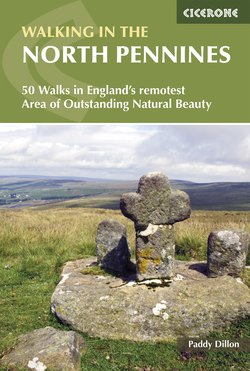Читать книгу Walking in the North Pennines - Paddy Dillon - Страница 15
На сайте Литреса книга снята с продажи.
ОглавлениеCHAPTER 2
THE EAST FELLSIDE
A small dam near Haresceugh (Walk 5)
In its fullest extent, the East Fellside is the name given to that formidable flank of the North Pennines that rises from the gentle, agricultural patchwork of the Vale of Eden. The highest Pennine summits rise one after another, with few breaches between them, either for roads, walkers, or even the weather. The nature of the slope gives rise to the peculiar Helm Wind – the only wind in Britain with its own name (see the section on the Helm Wind in the introduction to this guidebook).
Six walks are described in this chapter, and every one takes in one or two of the red sandstone villages crouching at the foot of the Pennine scarp, and each features the broad and bleak moorland crest above. Take note of the villages, which were all originally tightly built around broad greens, so that crops could be safely guarded and animals herded inside for the winter months, safe from border reivers and other raiders.
Cross Fell dominates the East Fellside, and the Pennine Way National Trail is encountered from time to time on these walks, between Cross Fell and Dufton. Two walks, one along Maiden Way and the other over the Knockergill Pass, run from the East Fellside, across bleak moorlands to South Tynedale (see Chapter 12).
The Settle to Carlisle railway line runs through the Vale of Eden and allows access to the East Fellside from Appleby and Langwathby, but connections with local bus services are very limited. Fellrunner bus services link some of the villages with Penrith and Carlisle, while Robinson’s bus services link some of the villages with Penrith and Appleby. Some East Fellside villages have a small range of facilities, while others offer nothing at all for passing walkers, beyond interesting vernacular architecture and expansive central greens.
